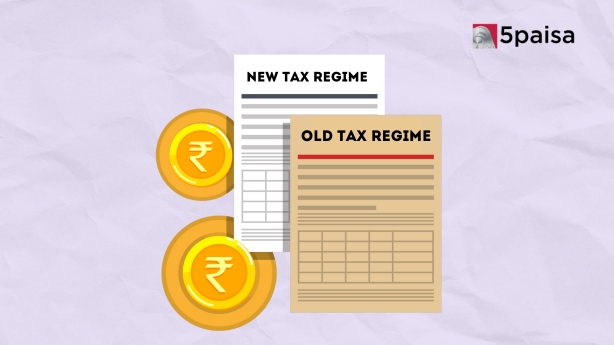3 Technologies Disrupting Finance in 2025: AI, Blockchain & Big Data Revolution
Maximizing Tax Benefits with Employer Contributions to NPS

The National Pension System (NPS) has gained popularity as a reliable retirement planning solution, primarily due to the tax benefits it offers. However, many subscribers fail to fully utilize the tax breaks provided by NPS, particularly those associated with employer contributions. In this blog post, we will explore the various tax benefits available when your employer contributes to your NPS account. Understanding these advantages will help you make informed decisions and maximize your tax savings while securing your future retirement.
Tax Deductions for NPS Contributions
If you contribute voluntarily to NPS under the All Citizens' Model, available to all Indian citizens over 18 years of age, you can claim deductions under section 80C of the Income Tax Act. This option is applicable if you choose the old tax regime.
As an employee, your contributions of up to 10 percent of your basic salary plus dearness allowance qualify for deductions under section 80CCD (1). Additionally, as an individual, you can make NPS contributions separate from your employment. However, the deductions under this section cannot exceed the overall limit of₹ 1.5 lakh specified in section 80C. Moreover, you can claim an additional deduction of₹ 50,000 under section 80CCD(1B). These benefits are commonly known and availed by taxpayers.
Underutilized Tax Benefits of the Corporate Scheme
The tax benefits offered under the corporate scheme of NPS remain underutilized due to a lack of awareness. Section 80CCD (2) provides a substantial tax reduction if your employer contributes to your NPS corpus. This benefit is available in both the old and new tax regimes.
Employees, including resident Indians, non-resident Indians (NRIs), and overseas citizens of India (OCI), between the ages of 18 and 70 can register as NPS subscribers under the corporate scheme through their employers. If you are already an NPS subscriber, you can provide your permanent retirement account number (PRAN) to your employer to facilitate contributions through this facility.
For salaried employees, if your employer contributes to your NPS, you will be eligible for a deduction of up to 10 percent of your basic salary (basic plus dearness allowance). Government employees enjoy an even higher deduction of 14 percent. Your own contributions to NPS will continue to be eligible for deductions under sections 80CCD (1) and 80CCD(1B).
Tax Benefits in Old and New Tax Regimes
Interestingly, the new tax regime, which offers minimal exemptions and deductions, retains the tax exemption on an employer's NPS contributions. If you opt for the old tax regime, your contributions will entitle you to deductions of up to₹ 1.5 lakh under section 80C and an additional₹ 50,000 under section 80CCD(1B).
Employer Contributions vs. Employees' Provident Fund (EPF) Contributions
It is important to note that employer contributions to NPS can be made in addition to the employees' provident fund (EPF) contributions. There is no need to choose one over the other. Employers can contribute to their employees' NPS, providing a valuable benefit that can help employees secure their retirement.
Flexibility in Account Transfer and Employer Policies
As an employee, you can transfer your NPS account, associated with a permanent retirement account number (PRAN), to another employer when you switch jobs. However, this transfer is subject to the new employer's willingness to contribute to your NPS. Depending on your employer's policy, certain charges, such as NPS investment management charges, custodian fees, and transaction charges, may be borne by either you or the employer.
Mandatory for Government Employees
NPS is mandatory for central government employees who joined the workforce after January 1, 2004, excluding armed forces personnel. Many state governments have also adopted the NPS. Private organizations, including employers, are eligible for tax benefits on contributions made to their employees' NPS accounts.
Withdrawal Rules and Pension
The withdrawal rules for NPS remain consistent. At the age of 60, you can withdraw 60 percent of the corpus as a lump sum, while the remaining 40 percent must be utilized to purchase annuities for pension payments.
Partial withdrawals of up to 25 percent of your own contributions are allowed after three years in cases of critical illnesses, property purchase, children's education, etc.
Employers can choose from ten NPS pension fund managers or allow employees to make the selection. If your employer adopted the NPS after January 2018 and selected a pension fund manager, you will have the option to switch to another provider after one year.
Conclusion
By taking advantage of the tax benefits associated with employer contributions to NPS, individuals can optimize their retirement savings while minimizing their tax liabilities. Understanding the available deductions and exemptions, both in the old and new tax regimes, empowers employees to make informed financial decisions. Remember to consult with a qualified tax professional to assess your specific circumstances and create a comprehensive retirement plan that aligns with your financial goals. Start planning for a secure and tax-efficient future with NPS and capitalize on the benefits it offers.
- Flat ₹20 Brokerage
- Next-gen Trading
- Advanced Charting
- Actionable Ideas
Trending on 5paisa
02
 5paisa Capital Ltd
5paisa Capital Ltd
03
 5paisa Capital Ltd
5paisa Capital Ltd
Personal Finance Related Articles
Disclaimer: Investment in securities market are subject to market risks, read all the related documents carefully before investing. For detailed disclaimer please Click here.





